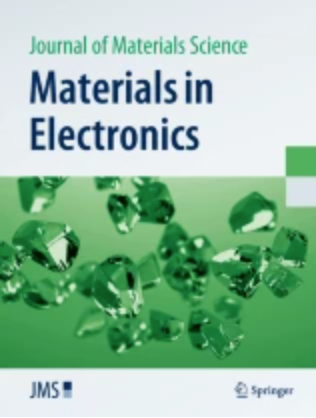Growth, structural, optical, thermal, and mechanical properties on imidazolium L-tartrate crystal doped with magnesium chloride for nonlinear optical applications
Abstract
Imidazolium L-tartrate doped with magnesium chloride (IMLT.MgCl2) crystals has been grown by slow evaporation approach. The synthesized IMLT.MgCl2 crystals are well crystalline monoclinic crystal system with space group P21. The powder X-ray diffraction pattern of the grown IMLT.MgCl2 crystals has been indexed. To prove the functional groups, FTIR spectra was utilized which verified the presence of O–H, N–H, C-H, C = O and other bonds. UV–Vis spectroscopy revealed the lower cutoff wavelength of 230 nm and the band gap of 5.07 eV. TG/DTA curves determined the thermal stability up to 205 °C and that its melting point is seen at 234 °C. Meyer’s index in microhardness tests verified the soft nature of the crystals. Laser-induced damage threshold value of IMLT.MgCl2 crystal is found to be 0.87 GW/cm2. The compound with the given designation has a NLO efficiency of 0.55 times of KDP.


 求助内容:
求助内容: 应助结果提醒方式:
应助结果提醒方式:


